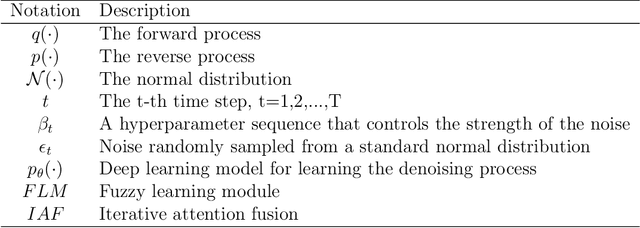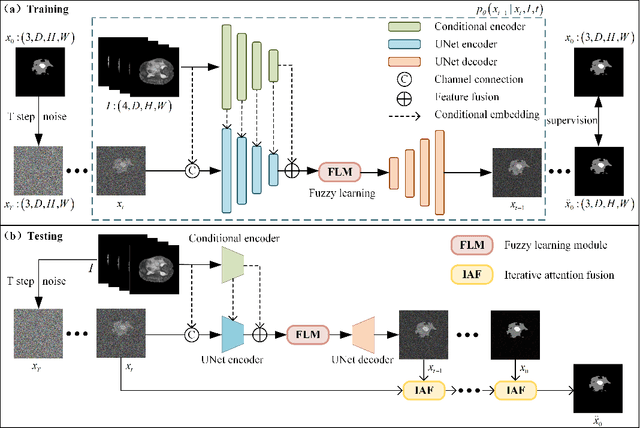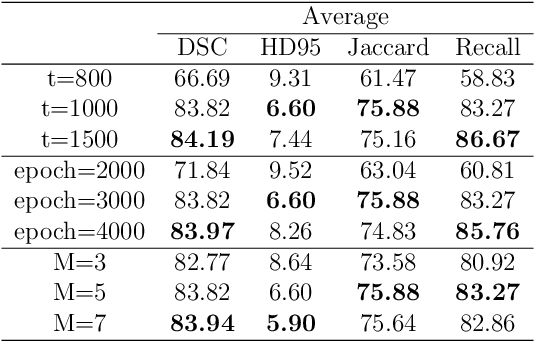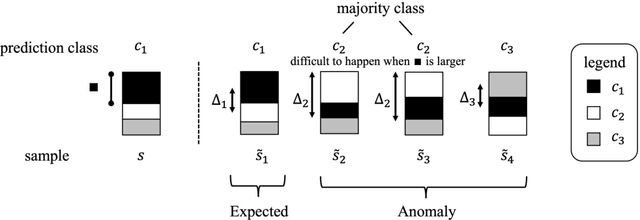Haipeng Wang
Cynthia
Error-Propagation-Free Learned Video Compression With Dual-Domain Progressive Temporal Alignment
Dec 11, 2025Abstract:Existing frameworks for learned video compression suffer from a dilemma between inaccurate temporal alignment and error propagation for motion estimation and compensation (ME/MC). The separate-transform framework employs distinct transforms for intra-frame and inter-frame compression to yield impressive rate-distortion (R-D) performance but causes evident error propagation, while the unified-transform framework eliminates error propagation via shared transforms but is inferior in ME/MC in shared latent domains. To address this limitation, in this paper, we propose a novel unifiedtransform framework with dual-domain progressive temporal alignment and quality-conditioned mixture-of-expert (QCMoE) to enable quality-consistent and error-propagation-free streaming for learned video compression. Specifically, we propose dualdomain progressive temporal alignment for ME/MC that leverages coarse pixel-domain alignment and refined latent-domain alignment to significantly enhance temporal context modeling in a coarse-to-fine fashion. The coarse pixel-domain alignment efficiently handles simple motion patterns with optical flow estimated from a single reference frame, while the refined latent-domain alignment develops a Flow-Guided Deformable Transformer (FGDT) over latents from multiple reference frames to achieve long-term motion refinement (LTMR) for complex motion patterns. Furthermore, we design a QCMoE module for continuous bit-rate adaptation that dynamically assigns different experts to adjust quantization steps per pixel based on target quality and content rather than relies on a single quantization step. QCMoE allows continuous and consistent rate control with appealing R-D performance. Experimental results show that the proposed method achieves competitive R-D performance compared with the state-of-the-arts, while successfully eliminating error propagation.
When Segmentation Meets Hyperspectral Image: New Paradigm for Hyperspectral Image Classification
Feb 18, 2025Abstract:Hyperspectral image (HSI) classification is a cornerstone of remote sensing, enabling precise material and land-cover identification through rich spectral information. While deep learning has driven significant progress in this task, small patch-based classifiers, which account for over 90% of the progress, face limitations: (1) the small patch (e.g., 7x7, 9x9)-based sampling approach considers a limited receptive field, resulting in insufficient spatial structural information critical for object-level identification and noise-like misclassifications even within uniform regions; (2) undefined optimal patch sizes lead to coarse label predictions, which degrade performance; and (3) a lack of multi-shape awareness around objects. To address these challenges, we draw inspiration from large-scale image segmentation techniques, which excel at handling object boundaries-a capability essential for semantic labeling in HSI classification. However, their application remains under-explored in this task due to (1) the prevailing notion that larger patch sizes degrade performance, (2) the extensive unlabeled regions in HSI groundtruth, and (3) the misalignment of input shapes between HSI data and segmentation models. Thus, in this study, we propose a novel paradigm and baseline, HSIseg, for HSI classification that leverages segmentation techniques combined with a novel Dynamic Shifted Regional Transformer (DSRT) to overcome these challenges. We also introduce an intuitive progressive learning framework with adaptive pseudo-labeling to iteratively incorporate unlabeled regions into the training process, thereby advancing the application of segmentation techniques. Additionally, we incorporate auxiliary data through multi-source data collaboration, promoting better feature interaction. Validated on five public HSI datasets, our proposal outperforms state-of-the-art methods.
Contrastive Representation Distillation via Multi-Scale Feature Decoupling
Feb 09, 2025



Abstract:Knowledge distillation is a technique aimed at enhancing the performance of a smaller student network without increasing its parameter size by transferring knowledge from a larger, pre-trained teacher network. Previous approaches have predominantly focused on distilling global feature information while overlooking the importance of disentangling the diverse types of information embedded within different regions of the feature. In this work, we introduce multi-scale decoupling in the feature transfer process for the first time, where the decoupled local features are individually processed and integrated with contrastive learning. Moreover, compared to previous contrastive learning-based distillation methods, our approach not only reduces computational costs but also enhances efficiency, enabling performance improvements for the student network using only single-batch samples. Extensive evaluations on CIFAR-100 and ImageNet demonstrate our method's superiority, with some student networks distilled using our method even surpassing the performance of their pre-trained teacher networks. These results underscore the effectiveness of our approach in enabling student networks to thoroughly absorb knowledge from teacher networks.
Reciprocal Point Learning Network with Large Electromagnetic Kernel for SAR Open-Set Recognition
Nov 07, 2024



Abstract:The limitations of existing Synthetic Aperture Radar (SAR) Automatic Target Recognition (ATR) methods lie in their confinement by the closed-environment assumption, hindering their effective and robust handling of unknown target categories in open environments. Open Set Recognition (OSR), a pivotal facet for algorithmic practicality, intends to categorize known classes while denoting unknown ones as "unknown." The chief challenge in OSR involves concurrently mitigating risks associated with generalizing features from a restricted set of known classes to numerous unknown samples and the open space exposure to potential unknown data. To enhance open-set SAR classification, a method called scattering kernel with reciprocal learning network is proposed. Initially, a feature learning framework is constructed based on reciprocal point learning (RPL), establishing a bounded space for potential unknown classes. This approach indirectly introduces unknown information into a learner confined to known classes, thereby acquiring more concise and discriminative representations. Subsequently, considering the variability in the imaging of targets at different angles and the discreteness of components in SAR images, a proposal is made to design convolutional kernels based on large-sized attribute scattering center models. This enhances the ability to extract intrinsic non-linear features and specific scattering characteristics in SAR images, thereby improving the discriminative features of the model and mitigating the impact of imaging variations on classification performance. Experiments on the MSTAR datasets substantiate the superior performance of the proposed approach called ASC-RPL over mainstream methods.
OSAD: Open-Set Aircraft Detection in SAR Images
Nov 03, 2024



Abstract:Current mainstream SAR image object detection methods still lack robustness when dealing with unknown objects in open environments. Open-set detection aims to enable detectors trained on a closed set to detect all known objects and identify unknown objects in open-set environments. The key challenges are how to improve the generalization to potential unknown objects and reduce the empirical classification risk of known categories under strong supervision. To address these challenges, a novel open-set aircraft detector for SAR images is proposed, named Open-Set Aircraft Detection (OSAD), which is equipped with three dedicated components: global context modeling (GCM), location quality-driven pseudo labeling generation (LPG), and prototype contrastive learning (PCL). GCM effectively enhances the network's representation of objects by attention maps which is formed through the capture of long sequential positional relationships. LPG leverages clues about object positions and shapes to optimize localization quality, avoiding overfitting to known category information and enhancing generalization to potential unknown objects. PCL employs prototype-based contrastive encoding loss to promote instance-level intra-class compactness and inter-class variance, aiming to minimize the overlap between known and unknown distributions and reduce the empirical classification risk of known categories. Extensive experiments have demonstrated that the proposed method can effectively detect unknown objects and exhibit competitive performance without compromising closed-set performance. The highest absolute gain which ranges from 0 to 18.36% can be achieved on the average precision of unknown objects.
EMWaveNet: Physically Explainable Neural Network Based on Microwave Propagation for SAR Target Recognition
Oct 13, 2024



Abstract:Deep learning technologies have achieved significant performance improvements in the field of synthetic aperture radar (SAR) image target recognition over traditional methods. However, the inherent "black box" property of deep learning models leads to a lack of transparency in decision-making processes, making them difficult to be convincingly applied in practice. This is especially true in SAR applications, where the credibility and reliability of model predictions are crucial. The complexity and insufficient explainability of deep networks have become a bottleneck for their application. To tackle this issue, this study proposes a physically explainable framework for complex-valued SAR image recognition, designed based on the physical process of microwave propagation. This framework utilizes complex-valued SAR data to explore the amplitude and phase information and its intrinsic physical properties. The network architecture is fully parameterized, with all learnable parameters endowed with clear physical meanings, and the computational process is completed entirely in the frequency domain. Experiments on both the complex-valued MSTAR dataset and a self-built Qilu-1 complex-valued dataset were conducted to validate the effectiveness of framework. In conditions of target overlap, our model discerns categories others find challenging. Against 0dB forest background noise, it boasts a 20% accuracy improvement over traditional neural networks. When targets are 60% masked by noise, it still outperforms other models by 9%. An end-to-end complex-valued synthetic aperture radar automatic target recognition (SAR-ATR) system has also been constructed to perform recognition tasks in interference SAR scenarios. The results demonstrate that the proposed method possesses a strong physical decision logic, high physical explainability and robustness, as well as excellent dealiasing capabilities.
FDiff-Fusion:Denoising diffusion fusion network based on fuzzy learning for 3D medical image segmentation
Jul 22, 2024



Abstract:In recent years, the denoising diffusion model has achieved remarkable success in image segmentation modeling. With its powerful nonlinear modeling capabilities and superior generalization performance, denoising diffusion models have gradually been applied to medical image segmentation tasks, bringing new perspectives and methods to this field. However, existing methods overlook the uncertainty of segmentation boundaries and the fuzziness of regions, resulting in the instability and inaccuracy of the segmentation results. To solve this problem, a denoising diffusion fusion network based on fuzzy learning for 3D medical image segmentation (FDiff-Fusion) is proposed in this paper. By integrating the denoising diffusion model into the classical U-Net network, this model can effectively extract rich semantic information from input medical images, thus providing excellent pixel-level representation for medical image segmentation. ... Finally, to validate the effectiveness of FDiff-Fusion, we compare it with existing advanced segmentation networks on the BRATS 2020 brain tumor dataset and the BTCV abdominal multi-organ dataset. The results show that FDiff-Fusion significantly improves the Dice scores and HD95 distance on these two datasets, demonstrating its superiority in medical image segmentation tasks.
* This paper has been accepted by Information Fusion. Permission from Elsevier must be obtained for all other uses, in any current or future media. The final version is available at [doi:10.1016/J.INFFUS.2024.102540]
A3Rank: Augmentation Alignment Analysis for Prioritizing Overconfident Failing Samples for Deep Learning Models
Jul 19, 2024



Abstract:Sharpening deep learning models by training them with examples close to the decision boundary is a well-known best practice. Nonetheless, these models are still error-prone in producing predictions. In practice, the inference of the deep learning models in many application systems is guarded by a rejector, such as a confidence-based rejector, to filter out samples with insufficient prediction confidence. Such confidence-based rejectors cannot effectively guard against failing samples with high confidence. Existing test case prioritization techniques effectively distinguish confusing samples from confident samples to identify failing samples among the confusing ones, yet prioritizing the failing ones high among many confident ones is challenging. In this paper, we propose $A^3$Rank, a novel test case prioritization technique with augmentation alignment analysis, to address this problem. $A^3$Rank generates augmented versions of each test case and assesses the extent of the prediction result for the test case misaligned with these of the augmented versions and vice versa. Our experiment shows that $A^3$Rank can effectively rank failing samples escaping from the checking of confidence-based rejectors, which significantly outperforms the peer techniques by 163.63\% in the detection ratio of top-ranked samples. We also provide a framework to construct a detector devoted to augmenting these rejectors to defend these failing samples, and our detector can achieve a significantly higher defense success rate.
Mamba-in-Mamba: Centralized Mamba-Cross-Scan in Tokenized Mamba Model for Hyperspectral Image Classification
May 20, 2024



Abstract:Hyperspectral image (HSI) classification is pivotal in the remote sensing (RS) field, particularly with the advancement of deep learning techniques. Sequential models, adapted from the natural language processing (NLP) field such as Recurrent Neural Networks (RNNs) and Transformers, have been tailored to this task, offering a unique viewpoint. However, several challenges persist 1) RNNs struggle with centric feature aggregation and are sensitive to interfering pixels, 2) Transformers require significant computational resources and often underperform with limited HSI training samples, and 3) Current scanning methods for converting images into sequence-data are simplistic and inefficient. In response, this study introduces the innovative Mamba-in-Mamba (MiM) architecture for HSI classification, the first attempt of deploying State Space Model (SSM) in this task. The MiM model includes 1) A novel centralized Mamba-Cross-Scan (MCS) mechanism for transforming images into sequence-data, 2) A Tokenized Mamba (T-Mamba) encoder that incorporates a Gaussian Decay Mask (GDM), a Semantic Token Learner (STL), and a Semantic Token Fuser (STF) for enhanced feature generation and concentration, and 3) A Weighted MCS Fusion (WMF) module coupled with a Multi-Scale Loss Design to improve decoding efficiency. Experimental results from three public HSI datasets with fixed and disjoint training-testing samples demonstrate that our method outperforms existing baselines and state-of-the-art approaches, highlighting its efficacy and potential in HSI applications.
CrossCert: A Cross-Checking Detection Approach to Patch Robustness Certification for Deep Learning Models
May 13, 2024Abstract:Patch robustness certification is an emerging kind of defense technique against adversarial patch attacks with provable guarantees. There are two research lines: certified recovery and certified detection. They aim to label malicious samples with provable guarantees correctly and issue warnings for malicious samples predicted to non-benign labels with provable guarantees, respectively. However, existing certified detection defenders suffer from protecting labels subject to manipulation, and existing certified recovery defenders cannot systematically warn samples about their labels. A certified defense that simultaneously offers robust labels and systematic warning protection against patch attacks is desirable. This paper proposes a novel certified defense technique called CrossCert. CrossCert formulates a novel approach by cross-checking two certified recovery defenders to provide unwavering certification and detection certification. Unwavering certification ensures that a certified sample, when subjected to a patched perturbation, will always be returned with a benign label without triggering any warnings with a provable guarantee. To our knowledge, CrossCert is the first certified detection technique to offer this guarantee. Our experiments show that, with a slightly lower performance than ViP and comparable performance with PatchCensor in terms of detection certification, CrossCert certifies a significant proportion of samples with the guarantee of unwavering certification.
 Add to Chrome
Add to Chrome Add to Firefox
Add to Firefox Add to Edge
Add to Edge